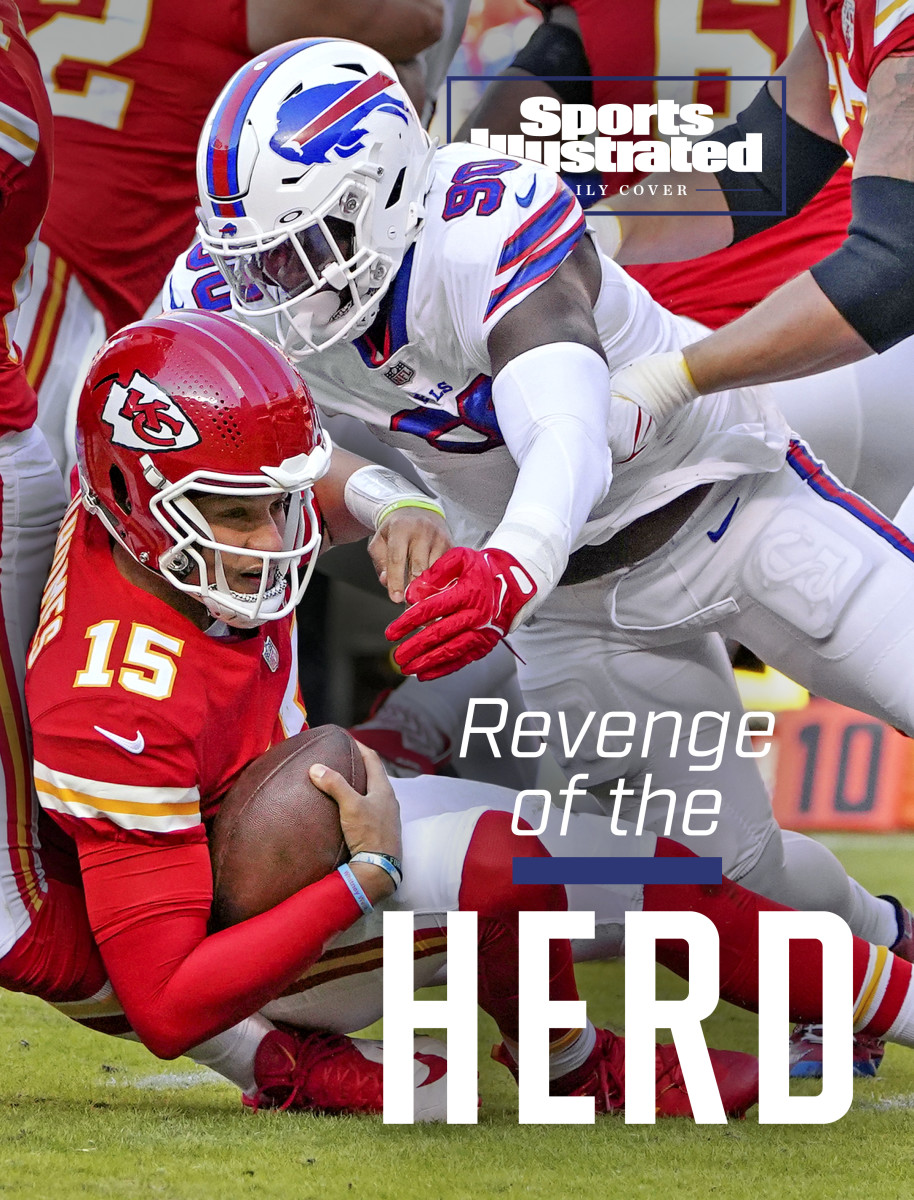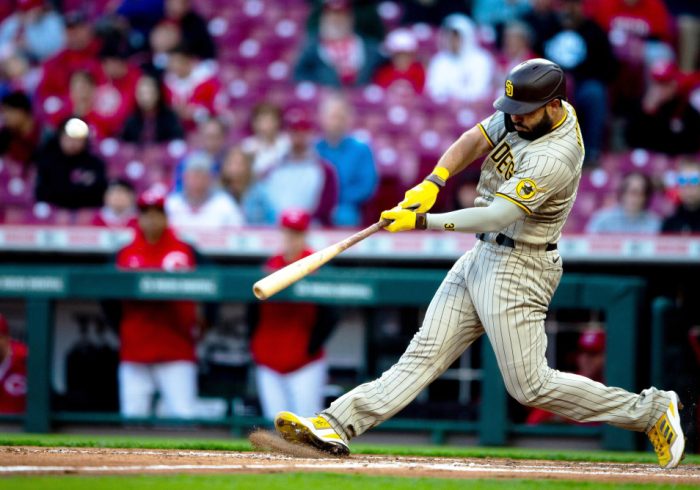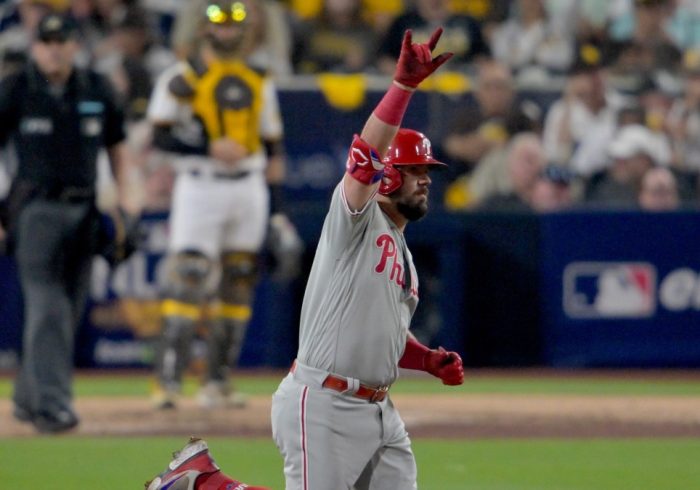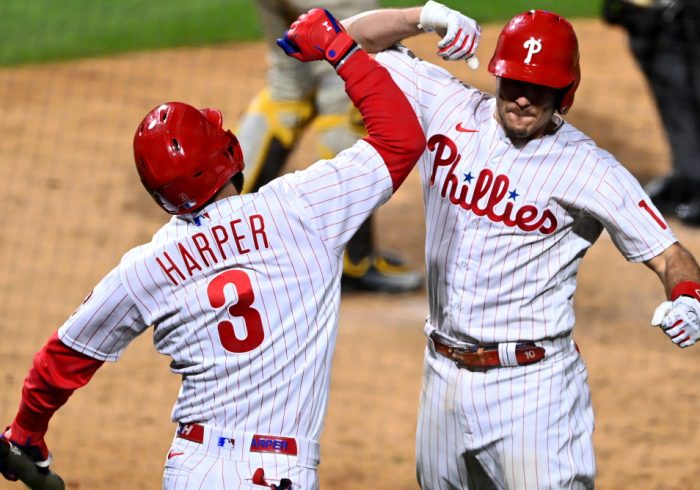Good morning, I’m Dan Gartland. I hope the rain here in the New York area clears out before Yankees-Guardians Game 5 tonight.
In today’s SI:AM:
⚾Gerrit Cole keeps a favorite alive
🎶Rocky Top, you’ll always be …
If you’re reading this on SI.com, you can sign up to get this free newsletter in your inbox each weekday at SI.com/newsletters.
The underdogs are thriving
Saturday was one of the most chaotic days of playoff baseball you could imagine.
The four games saw the two best teams in the National League eliminated, a walk-off by another underdog after a three-run ninth inning and an 18-inning marathon to finish off a sweep. Playoff baseball is always unpredictable, but this year’s postseason feels even more uncertain.
The Dodgers were supposed to be an unbeatable juggernaut. They were during the regular season, winning the fourth-most games in MLB history, but they just happened to lose three out of four to another good team at the wrong time. The same goes for the Braves, who were as hot as anybody over the final two months of the season. Now that they’ve both been eliminated, the top four teams in the NL are all out of contention. If not for Gerrit Cole’s heroics last night for the Yankees to send their series with the Guardians to a decisive Game 5, we might be looking at a postseason in which seven of the top nine teams in baseball were eliminated before the LCS.
Is that a bad thing? Not necessarily. It isn’t as if the Padres and Phillies aren’t worthy of their spots in the NLCS. Both are talented teams that had good regular seasons and are getting hot at the right time. As Emma Baccellieri wrote after Philadelphia won Game 4:
Yes, the playoffs feel inherently chaotic by virtue of their small sample size, with results that can occasionally seem capricious or fickle or simply nonsensical. Whenever a third-place team like the Phillies defeats a 101-win, best-in-division reigning champion like the Braves, there are bound to be comments about randomness and chance. But this series win did not feel like a fluke. It felt simple: The Phillies just looked that much better than the Braves.
The success of the underdogs is worth examining, though. It isn’t unusual for an inferior team to prevail in the postseason, even in the seven-game LCS. The 88-win Braves beat the 106-win Dodgers in the NLCS last year, after all. But to have two top teams go down early (and maybe a third, depending on what happens in Game 5 tonight in the Bronx) is noteworthy, especially considering this is the first year of the new postseason format that “rewards” the top teams with a bye to the LDS. Is that really much of a prize?
Sure, the Padres and Phillies had to survive a virtual toss-up of a three-game series (both teams played entirely on the road, no less) just to get to the NLDS, but you could argue that playing meaningful baseball while your opponents sit idle is an advantage. Were the teams that earned byes rested or rusty? As a team, the Braves batted .180/.250/.344 in their series. The Yankees have been just as bad, batting .177/.252/.363 in their series against Cleveland.
It feels silly to complain, though, because the games have been so good. Who cares whether the best regular-season teams are advancing?
The best of Sports Illustrated
Albert’s Breer’s MMQB, on the role Von Miller played in the Bills’ impressive win against the Chiefs in Kansas City, is today’s Daily Cover:
When the Bills needed a stop, down three with fewer than seven minutes left in the game, Miller gave them a sack of Patrick Mahomes. When the Bills needed to close Kansas City out, it was Miller flushing Mahomes from the pocket and forcing a rushed throw that was picked off by fifth-year corner Taron Johnson. When the offense needed the defense, this time—unlike last year—the defense answered the bell. Which is why Miller is where he is now in the first place.
Conor Orr argues that it wouldn’t be outrageous for the Patriots to stick with Bailey Zappe once Mac Jones is healthy enough to return. … Pat Forde tries to make sense of an action-packed Saturday in college football. … Michigan’s dominant win over Penn State proved that the Wolverines and Ohio State are leaps and bounds above the rest of the Big Ten, Michael Rosenberg writes.
Around the sports world
Jordan Poole addressed the incident with Draymond Green for the first time. … Tom Brady let his offensive line hear it on the sideline during the Bucs’ loss to the Steelers. … An unidentified Fresno State football coach has been placed on administrative leave after punching a glass window in the press box, sending two fans seated below to the hospital with lacerations. … Panthers receiver Robbie Anderson was told to leave yesterday’s game by interim head coach Steve Wilks.
The top five…
… things I saw yesterday:
5. Gerrit Cole’s reaction after his eighth strikeout of the night, stranding a runner in scoring position.
4. This monster punt by the Vikings’ Ryan Wright and the coverage by Kene Nwangwu.
3. Jets cornerback Sauce Gardner celebrating on the field at Lambeau while wearing a cheesehead.
2. Kate Del Fava’s goal in the 100th minute to send the KC Current to the NWSL semifinals.
1. Bill Belichick’s reaction to Patriots rookie Brenden Schooler attempting to hand him the ball after a turnover.
SIQ
On this day in 1991, the Penguins’ Paul Coffey passed Denis Potvin to become the NHL’s all-time leading scorer among defensemen. Who later passed Coffey and now holds the record?
- Ray Bourque
- Niklas Lidstrom
- Al MacInnis
- Chris Chelios
Friday’s SIQ: Which player has appeared in the most Eagles-Cowboys games?
- Jason Witten
- David Akers
- Brian Dawkins
- L.P. Ladouceur
Answer: L.P. Ladouceur. I bet only Cowboys fans got this one. Ladouceur was the Dallas long snapper for 16 seasons (2005 to ’20) and appeared in all 32 regular-season games against the Eagles during that time. He also played in their ’09 postseason meeting, the first playoff game between the two teams since 1995.
Jason Witten also played 16 seasons for the Cowboys and would have been tied with Ladouceur atop that list had he not missed the Oct. 12, 2003, game with a fractured jaw. Witten (31 games) and Ladouceur are the only Cowboys players to appear in at least 30 games against the Eagles. Too Tall Jones is third on the list with 29 games played against Philadelphia.
The Eagle with the most games against the Cowboys is Hall of Fame receiver Harold Carmichael, who faced Dallas 25 times. Brian Dawkins is second with 24, and David Akers is third with 23.
From the Vault: Oct. 17, 1977
In the late 1970s, a new scheme was taking over the NFL: the 3–4 defense. Until then, the standard defensive formation was the 4–3—four down linemen and three linebackers. SI assigned Joe Marshall to explain this new phenomenon:
More and more NFL teams are switching to a defense variously called Orange, 53, 30, 3–2, Stack, or—most descriptively—3–4. By whatever name, this defense deploys three linemen and four linebackers, and it features a new position with a fascinating name—nose tackle.
Seven NFL teams now use the 3–4 as their primary defense, and a dozen others go into it in specific situations. Oakland won the Super Bowl with the 3–4 last season. Of the seven 3–4 teams, Oakland, Denver, Houston and Miami all shut out their opponents in their opening games, and Philadelphia allowed only a field goal. The Broncos’ 3–4 did not yield a touchdown in its second game, either. Exclude winless Tampa Bay, and the other six 3–4 advocates—including New England—have a combined record of 18–6. And of the four NFL teams with undefeated records after the first four weeks, two—Oakland and Denver—play the 3–4 most of the time. (Dallas and Baltimore are the undefeated clubs using the 4–3.)
The 3–4 is ubiquitous today, but it’s a fairly modern invention. According to Marshall’s story, the 1973 Dolphins were the first NFL team to use the formation and did so only because one of their starting defensive ends got hurt. The coaching staff thought the next guy on the depth chart at defensive end wasn’t as good as the next linebacker, so they started playing four linebackers. Four years later, a quarter of the league was using it.
Today, the 3–4 is even more popular. And as a result, fans are familiar with the strategy involved. But if you want to learn more about the thought process behind the 3–4 vs. the 4–3, Marshall’s story still holds up.
Check out more of SI’s archives and historic images at vault.si.com.
Sports Illustrated may receive compensation for some links to products and services on this website.



